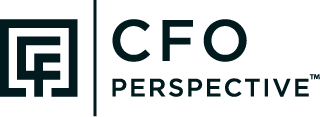Setting goals is both art and science. Whole books can be written about it. Should you set stretch goals or goals that are more attainable?
Two extremes
Let’s first look at two extreme goals that aren’t useful: Setting goals too high and too low.
Setting goals too high demoralizes staff. The metric loses credibility and relevance. Employees don’t make an effort to improve performance on the metric because they know they’re doomed to failure.
Setting goals too high causes staff to lose confidence and trust in those setting the goals. Employees think, “Do the goal-setters not understand what’s reasonable? Do they understand but want to push us beyond what’s humanly possible? In other words, are the goal-setters evil or just clueless?”
Setting goals too low destroys productivity and profitability. Employees may feel good about hitting goals, but the company is underperforming. This eventually hurts everyone. Lower profits mean less money for employees and owners. Poorly run companies usually lose sales to better companies or are bought by them.
Benefits of stretch goals

Now let’s look at stretch goals. A stretch goal is potentially achievable but requires significant effort. It can often only be attained through innovation or large amounts of brute force effort. This amount of effort likely can’t be sustained for long periods.
If they are so difficult, why would you set stretch goals? People may achieve more when given stretch goals than more attainable ones. Managers must clarify that the company and its employees aren’t expected to achieve 100% of the stretch goals.
In Measure What Matters, John Doerr showed how Google only expected to achieve 70% of its stretch goals. If people were achieving a higher percentage, they were presumed to be setting goals too low. They weren’t stretch goals.
Some cautions with stretch goals
Extremely high goals come with a warning. People are wired to achieve goals. If they can’t achieve them ethically, there is a strong temptation to cheat. One example is Wells Fargo Bank. Wells put emphasis on a metric that measured products per household. Employees opened thousands of fake accounts under pressure to meet high metric goals.
Setting high goals requires coaching on how to manage with them. They cannot be used as a stick to threaten people’s pay or employment status. You will need strong internal controls to prevent fraud. Measure total performance across many metrics and non-metric qualitative factors.
Why you may choose more attainable goals
Some companies are better served by setting more attainable goals. If you choose this route, expect nothing short of achieving 100% of those goals. Why would you choose this option?
Very high performers or perfectionists may be dissatisfied with not being able to reach all their goals. A company with stretch goals may say hitting 70% of those goals is acceptable. Some employees are wired to do whatever it takes to achieve 100% of all goals given to them. They pay a high price when trying to reach 100% of stretch goals. Managers will need to spend more time coaching these employees if they have stretch goals.
Employees, rather than the company, may decide priorities when they only need to achieve 70% performance. Achieving a certain level of some metrics might be “do or die” for the company. For other goals, achieving a certain level is important but not critical.
Do you want to allow employees to decide which metrics they hit and which ones they don’t? One way to mitigate this is to set goals for “do or die” metrics at that challenging “do or die” amount and set high stretch goals for the other metrics.
Are stretch goals right for you?
Are stretch goals right for you? Which do you want more, higher achievement in total across all your metrics but not achieving some, or achieving all the metrics? What’s your culture? Is not meeting metrics going to seriously hurt morale – or worse – promote unethical behavior?
Regardless of which option you choose, clearly set your expectations.
For more info, check out these topics pages:
